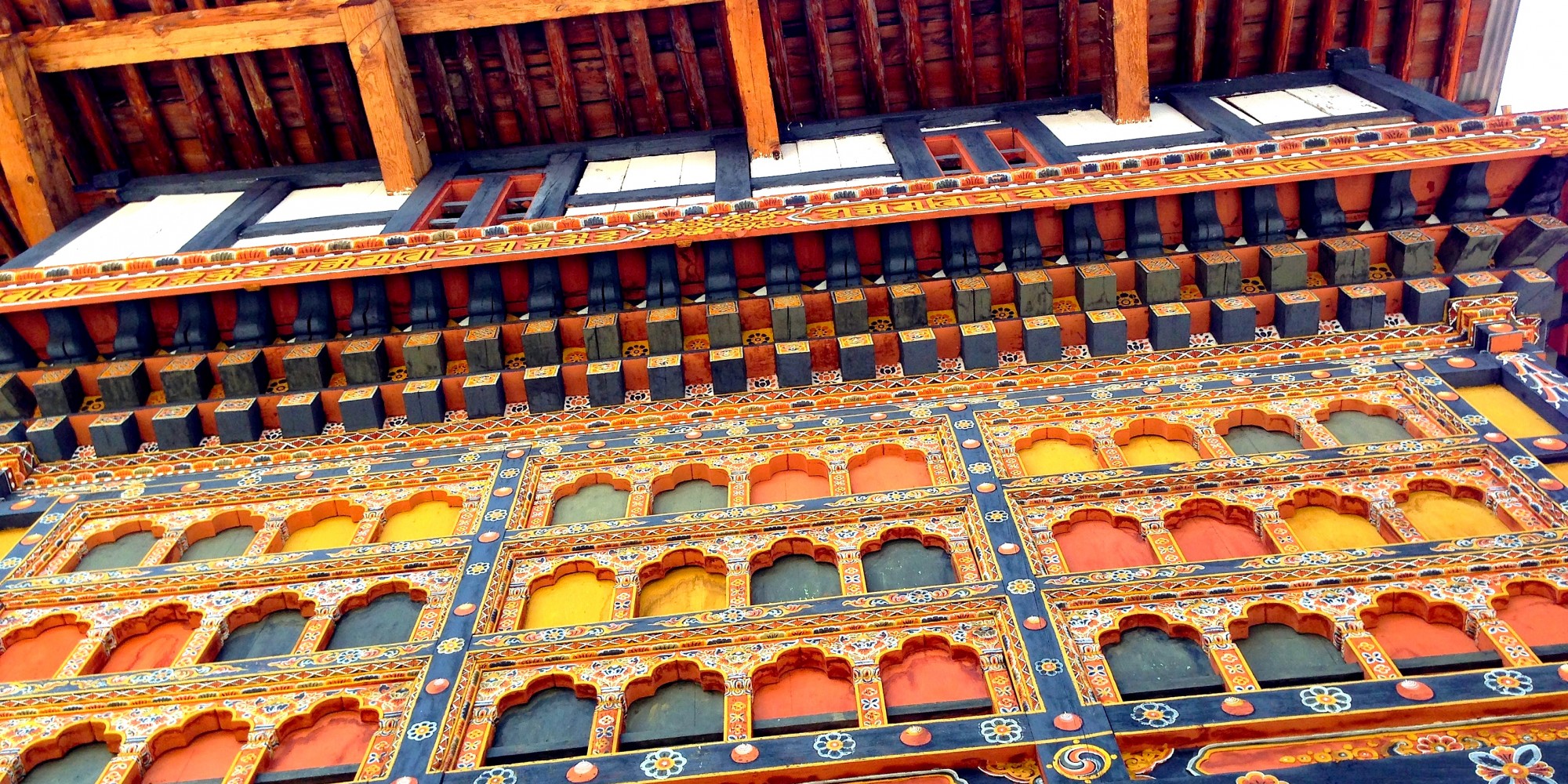
Natural Architecture
Traditional Bhutanese architecture is pleasing, not just on the eye, but moreover environmentally friendly and energy-efficient. The age-old wisdom of building with the earth, instead of against nature, creates an atmosphere of a bygone era. The way of building not just homes, but also temples, monasteries and even bridges have a distinct character, unlike any other nation in the Himalayas. Houses are quite spacious for an Asian country and fondly take advantage of the natural light available. Timber, stone, clay and adobe style bricks are the more commonly used building materials.
Country homes comprise mostly of three stories, the ground floor occupied by the livestock, the second and third are the living quarters with a traditional shrine placement. Interior stairs are many a time cut from a single trunk, whereas doors of Bhutanese farm homes usually have a tongue-and-groove design, hinged on a pair of wooden pegs. Since many of the traditional farmhouse are built entirely from materials sourced locally, without the use a single nail, houses are allowed to disintegrate back into the earth at the end of their lives.
The Buddhist temples are mostly relatively simple in design, with single-story structures surrounded by a courtyard. Common feature are high thresholds habitually adorned with a red stripe along the upper walls, and gold-plated copper roofs. The internal walls and congregation halls are often decorated with painted murals depicting the life of Buddha, the legends of Guru Padmasambhava, and protective deities. Monasteries subscribe to the cluster and dzong architectural traditions. Cluster types present the oldest tradition of monastic architecture, in which one or two temples is surrounded by clusters of housing for its monks.
For ages cantilever bridges have been relied upon to travel across mountainous Bhutan, to cross the steep ravines and treacherous rivers below. They tend to be combinations of massive, interlocking wooden structures that form a single bridge. These ancient bridges have carried centuries of human, animal and nowadays industrial traffic. Though cantilever bridges are the most traditional, the Kingdom of Bhutan also have several large suspension bridges.
A visit to Bhutan to view the architecture and to first-hand experience how natural buildings are erected, is worth a trip on its own.

